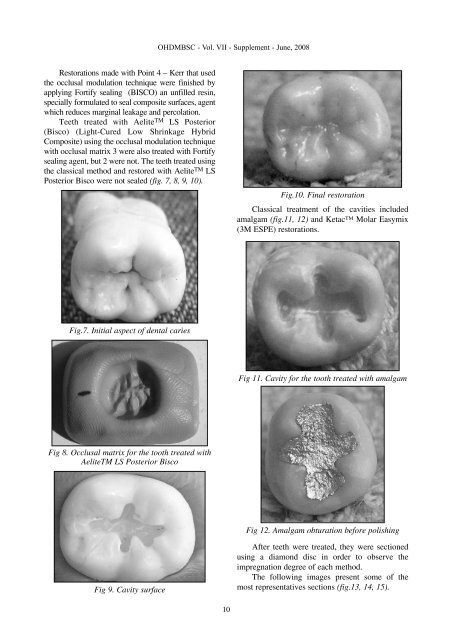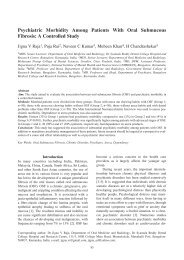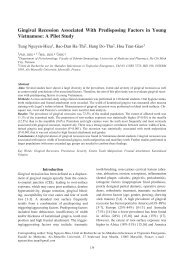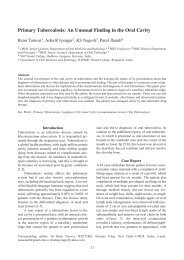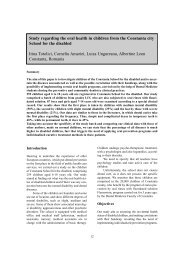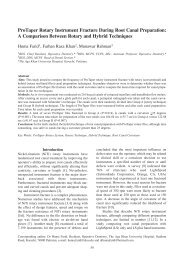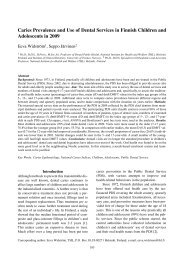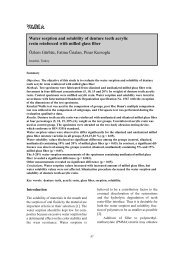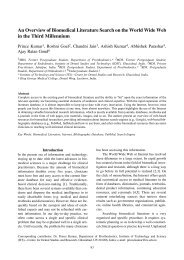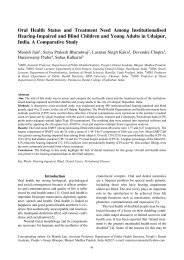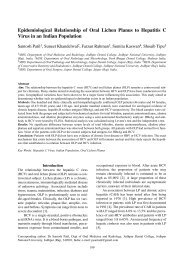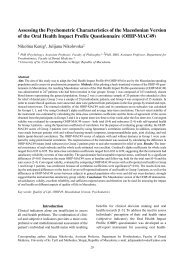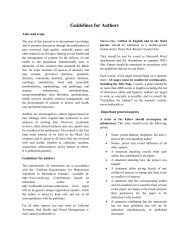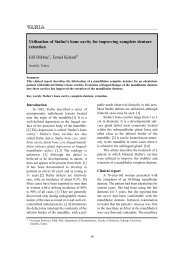Dental restoration with composite materials in the posterior zone
Dental restoration with composite materials in the posterior zone
Dental restoration with composite materials in the posterior zone
Create successful ePaper yourself
Turn your PDF publications into a flip-book with our unique Google optimized e-Paper software.
OHDMBSC - Vol. VII - Supplement - June, 2008<br />
Restorations made <strong>with</strong> Po<strong>in</strong>t 4 – Kerr that used<br />
<strong>the</strong> occlusal modulation technique were f<strong>in</strong>ished by<br />
apply<strong>in</strong>g Fortify seal<strong>in</strong>g (BISCO) an unfilled res<strong>in</strong>,<br />
specially formulated to seal <strong>composite</strong> surfaces, agent<br />
which reduces marg<strong>in</strong>al leakage and percolation.<br />
Teeth treated <strong>with</strong> Aelite TM LS Posterior<br />
(Bisco) (Light-Cured Low Shr<strong>in</strong>kage Hybrid<br />
Composite) us<strong>in</strong>g <strong>the</strong> occlusal modulation technique<br />
<strong>with</strong> occlusal matrix 3 were also treated <strong>with</strong> Fortify<br />
seal<strong>in</strong>g agent, but 2 were not. The teeth treated us<strong>in</strong>g<br />
<strong>the</strong> classical method and restored <strong>with</strong> Aelite TM LS<br />
Posterior Bisco were not sealed (fig. 7, 8, 9, 10).<br />
Fig.10. F<strong>in</strong>al <strong>restoration</strong><br />
Classical treatment of <strong>the</strong> cavities <strong>in</strong>cluded<br />
amalgam (fig.11, 12) and Ketac Molar Easymix<br />
(3M ESPE) <strong>restoration</strong>s.<br />
Fig.7. Initial aspect of dental caries<br />
Fig 11. Cavity for <strong>the</strong> tooth treated <strong>with</strong> amalgam<br />
Fig 8. Occlusal matrix for <strong>the</strong> tooth treated <strong>with</strong><br />
AeliteTM LS Posterior Bisco<br />
Fig 12. Amalgam obturation before polish<strong>in</strong>g<br />
Fig 9. Cavity surface<br />
After teeth were treated, <strong>the</strong>y were sectioned<br />
us<strong>in</strong>g a diamond disc <strong>in</strong> order to observe <strong>the</strong><br />
impregnation degree of each method.<br />
The follow<strong>in</strong>g images present some of <strong>the</strong><br />
most representatives sections (fig.13, 14, 15).<br />
10


